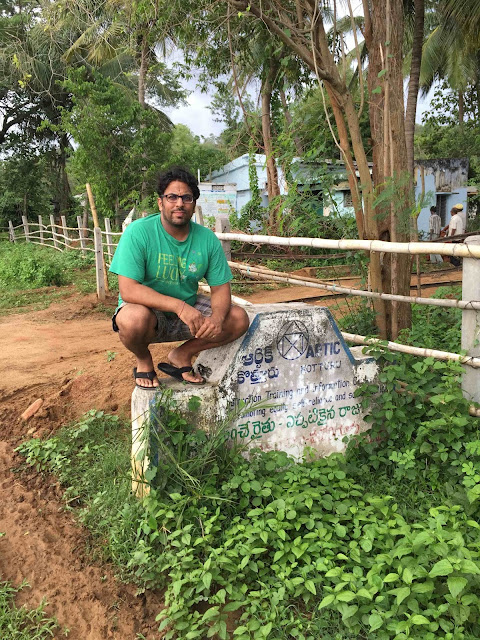By Dev Kashyap, 2nd year MDP student
After over a
month in South Asia, I finally feel I am settling into a groove. The journey
has led me to Kotturu, in the state of Andhra Pradesh, India. The weather is
hot and it is pre-monsoon season with temperatures daily hitting low-to-mid 30
degrees Celsius, but our arrival in this rural setting was just after a
debilitating heat wave that caused somewhere around 1,000 deaths in the region.
The hot days usually get relieved with evening showers, but by mid-afternoon a
seat in front of a fan, bottled water in close proximity, is the appropriate
posture.
 |
| Dev on top of ARTIC sign in Kotturu, India |
Amidst the heat and humidity, the purpose of our trip
to this part of the world has commenced: researching ‘Adivasi’ (the local word)
or Indigenous resilience in the face of environmental and external-driven
change in the region around Kotturu, Andhra Pradesh. Specifically, the research
is revolved around the traditional crop of Millets, a nutritious ‘ancient
world’ grain whose cultivation has been in steady decline in recent years due
to the introduction of ‘non-native’ food crops and cash crops into the area.
Our research has been possible with the help of our host and local NGO,
Appropriate Reconstruction Training and Information Centre (ARTIC), who have
been doing grassroots development work in the area for over 30 years.
Since millets production and subsequently consumption
has been in such decline over the last few decades, the first month of our
field placement can be summarized as being ‘on the trail for millets’. The trail has led us to local government and
administrative offices, meeting officials in agriculture, health, local
development. Furthermore, community visits have been conducted in more than 10
villages to get an idea of which communities will be targeted as part of our
research.

No comments:
Post a Comment